You searched for: 代google霸屏开户投放靠谱【TG飞机:@bapingseo】加蓬谷歌竞价排名【TG电报:@bapingseo】乌兹别克斯坦谷歌排名【Telegram:@bapingseo】ag是什么reu6h彩库宝典苹果?6hDw9N/m7Kj4E.html
<< Previous | Displaying results 101-150 of 611 for "代google霸屏开户投放靠谱【TG飞机:@bapingseo】加蓬谷歌竞价排名【TG电报:@bapingseo】乌兹别克斯坦谷歌排名【Telegram:@bapingseo】ag是什么reu6h彩库宝典苹果?6hDw9N/m7Kj4E.html" | Next >>
-
Otto Wels
ArticleSocial Democratic politician Otto Wels was the only German parliamentary leader to openly oppose passage of the Enabling Act, the cornerstone of Adolf Hitler's dictatorship.
-
Cyprus Detention Camps
ArticleIn 1946-48, the British government intercepted tens of thousands of Holocaust survivors seeking to reach Palestine and held them in detention camps on Cyprus.

-
Jewish Badge
Timeline EventSeptember 1, 1941. On this date, Reinhard Heydrich declared that all Jews aged 6 and over in the Third Reich must wear a yellow Star of David.
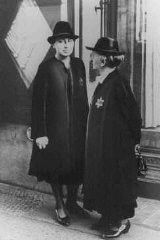
-
Julius (Julo) Levin
ID CardJulo was born to a Jewish family in the city of Stettin in northeastern Germany. From an early age Julo showed an interest in art; at 6 he had collected more than 3,000 pictures. His family hoped he would become a businessman, but his interest in painting absorbed all his energy. In 1926 he graduated from art school and by 1931 he secured his first commission in Duesseldorf. 1933-39: Until the Nazis came to power in 1933, Julo was a highly regarded artist. The Nazis' strict interpretation of art, however,…

-
David J. Selznik
ID CardThe village in Lithuania where David grew up was located near the Latvian border. His father was a peddler. At age 6, David was sent to Ukmerge, a town known to Jews by its Russian name, Vilkomir, to study traditional Jewish texts at the rabbinical academy there. Six years later, David was called to return home to head the Selznik family because his father had died. 1933-39: David lost his job in 1933, so he left Lithuania and went to the United States and then Portugal. But in 1936 the Baltic states were…
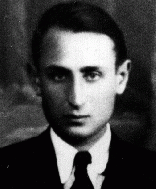
-
Yosel Coller
ID CardOne of six children, Yosel was raised in a religious Jewish family in Lodz, an industrial city in western Poland. His father was a businessman. At the age of 6, Yosel began attending a Jewish day school. His two older sisters attended public school in the morning and religious school in the afternoon. Yosel spent much of his free time playing soccer with his brothers. 1933-39: Yosel's family lived in a modest house in the northern section of Lodz. He went to a Jewish day school and had many friends there.…
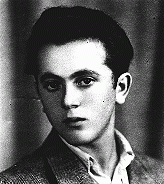
-
Jacob Wasserman
ID CardJacob was the eldest of three sons born to religious Jewish parents in the city of Krakow. His father was a flour merchant. The Wassermans spent summer vacations near Proszowice at a farm owned by their grandfather, who also ran a flour mill. 1933-39: In March 1939, at the age of 13, Jacob celebrated his bar-mitzvah. That summer, his family vacationed as usual at his grandfather's farm. They returned to a nightmare. Krakow had been occupied by the Germans on September 6. Jews were not allowed to walk on…
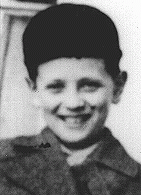
-
Judith Margareth Konijn
ID CardJudith was the younger of two children born to religious, middle-class Jewish parents. Judith's mother, Clara, was Sephardic, a descendant of Jews who had been expelled from Spain in 1492. Her father, Lodewijk, was a traveling representative for a firm based in Amsterdam. The family lived in an apartment in a new section of Amsterdam on the southern outskirts. 1933-39: Judith attended grade school with her cousin Hetty who was the same age. Judith loved to study. Her mother taught piano to students who…
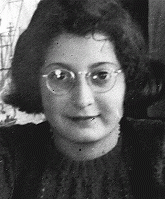
-
Thomas Elek
ID CardThomas was born to a Jewish family who moved to Paris when he was 6. His father's outspoken criticism of the fascist government and his affiliation with the Hungarian Communist Party led to the family's expulsion from Hungary in 1930. With the help of his father, a professor of modern languages, Thomas quickly learned French and excelled in school. He had a special interest in poetry and music. 1933-39: Thomas's father often argued against fascism, and he was greatly disturbed when Hitler became the…
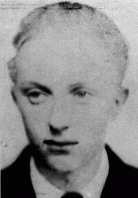
-
Helga Leeser
ID CardThe older of two sisters, Helga was raised by prosperous, non-religious Jewish parents in the small Catholic town of Duelmen in western Germany. Her family owned a linen factory. Before marrying Helga's much older father in 1927, her mother had been a Dutch citizen. As a child, Helga looked forward to vacations in the Netherlands with its comparatively relaxed atmosphere. 1933-39: At age 6 Helga began attending a Catholic elementary school. Antisemitism wasn't a problem until the night of November 9, 1938…
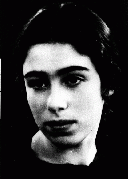
-
Wallace Witkowski describes harsh living conditions for non-Jews in Poland
Oral HistoryWallace and his family were Polish Catholics. His father was a chemical engineer and his mother a teacher. The Germans occupied Kielce in 1939. Wallace witnessed pogroms against Jews in 1942. Wallace was active in the anti-Nazi resistance, acting as a courier between partisan groups. In 1946, in liberated Poland, Wallace witnessed the Kielce pogrom. He was reunited with his father in the United States in 1949; other family members followed. The Communist regime in Poland, however, denied his only sister…

-
Leopold Page describes meeting German industrialist Oskar Schindler
Oral HistoryLeopold was a teacher in Krakow, Poland, when World War II began in 1939. While serving in the Polish army, he was captured by Germans. Leopold escaped from a prisoner-of-war transport. Soon after, he met the German industrialist Oskar Schindler. The two became friends. Leopold was forced to live in the Krakow ghetto. He later worked in Schindler's factory in Bruennlitz. He and the other Jews who worked there were treated relatively well and protected from the Nazis. After the war, Leopold moved to the…

-
Blechhammer
ArticleThe Germans established the Blechhammer camp as a subcamp of Auschwitz in April 1941. Learn about the camp's history and conditions there.
-
Klaus Barbie: The Butcher of Lyon
ArticleKlaus Barbie, chief of the Gestapo in Lyon, France, was nicknamed the "Butcher of Lyon" for his brutal actions towards Jews and members of the French Resistance.
-
Nazi Party Platform
ArticleThe Nazi Party Platform was a 25-point program for the creation of a Nazi state and society. Hitler presented it at the Hofbräuhaus Beerhall in Munich in February 1920.

-
Nuremberg Race Laws
ArticleLearn more about the Reich Citizenship Law and the Law for the Protection of German Blood and German Honor, collectively known as the Nuremberg Race Laws.
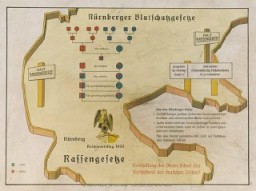
-
Joseph Gani: Maps
Media EssayBorn to a Jewish family in Preveza, Joseph Gani was endangered by the German occupation of Greece. In March 1944, the Nazis deported the Jews of Preveza to Auschwitz. Joseph was killed several months later, at the age of 18. These maps add geograp...
-
Moise Gani: Maps
Media EssayBorn to a Jewish family in Preveza, Moise Gani was endangered by the German occupation of Greece. In March 1944, the Nazis deported the Jews of Preveza to Auschwitz. Albert was killed several months later, at the ag...
-
Albert Gani: Maps
Media EssayBorn to a Jewish family in Preveza, Albert Gani was endangered by the German occupation of Greece. In March 1944, the Nazis deported the Jews of Preveza to Auschwitz. Albert was killed several months later, at the age...
-
German women perform labor service
PhotoA work corps of German women marches to the fields. Beginning in 1939, many thousands of German women between the ages of 17 and 25 worked on farms as part of a national labor service program. Germany, wartime.
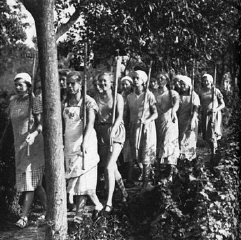
-
Studio portrait of Chava Leichter
PhotoStudio portrait of Chava Leichter, murdered in the Treblinka killing center in 1942 at the age of 25. Her brother Chaim emigrated to Palestine in 1937 on the boat Polania. He served in the British army in Libya during the war. This photograph was taken in 1939.
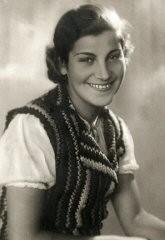
-
Photograph of Dawid Samoszul
PhotoClose-up street portrait of Dawid Samoszul, probably taken in Piotrkow Trybunalski, Poland, between 1936 and 1938. Dawid was killed in the Treblinka killing center at the age of 9.
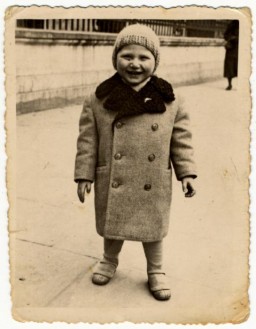
-
Amalie Petranka (later Salsitz)
PhotoAmalie Petranka (later Salsitz) at 22 years of age. She gave this photo to Norman Salsitz shortly after they met. Photograph taken in Stanislawow, Poland, on October 10, 1939.
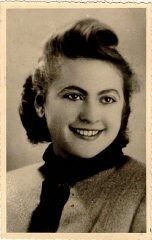
-
Irena Aronowicz
ArticleYoung people's diaries capture some of the most heartbreaking experiences of the Holocaust. Learn about the diary and experiences of Irena Aronowicz.
-
Jehuda Lejb Lubinski (Lolek Lubinski)
ArticleYoung people's diaries bear witness to some of the most heartbreaking experiences of the Holocaust. Learn about the diary and experiences of Lolek Lubinski
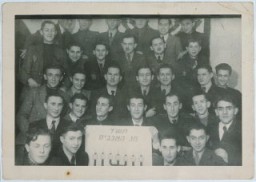
-
Rudolf Hess
ArticleBrief overview of the charges against Rudolf Hess, one of the leading German officials tried during the International Military Tribunal at Nuremberg.

-
Judging War Crimes Today
ArticleThomas Buergenthal's experiences as Holocaust survivor and international judge shape his unique perspective on judging war crimes today and justice after genocide.
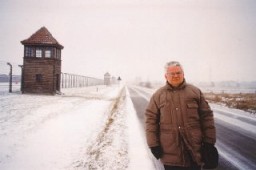
-
Sigrid Undset
ArticleSigrid Undset was a Norwegian author who won the Nobel Prize for Literature. In part because of her criticism of the Nazi regime, her work was burned in 1933.
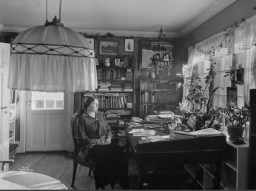
-
Young children in the Stuttgart displaced persons camp
PhotoElementary school-age members of Hashomer Hatzair in the Stuttgart displaced persons camp, circa 1946–1949. Lova Warszawczyk is standing in the center.
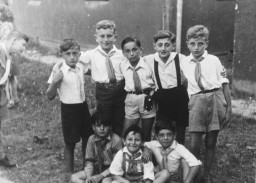
-
John D. Rastelli describes entering occupied Austria and burial of the dead in Mauthausen
Oral HistoryJohn D. Rastelli is a veteran of the 11th Armored Division. During the invasion of German-held Austria, in May 1945 the 11th Armored (the "Thunderbolt" division) overran two of the largest Nazi concentration camps in the country: Mauthausen and Gusen.

-
World War II in Europe
ArticleGermany started World War II in Europe on September 1, 1939, by invading Poland. War would continue until 1945. Learn more about WWII and genocide in Europe.
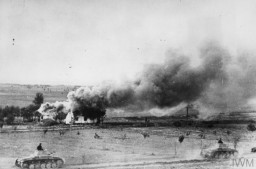
-
1944: Key Dates
ArticleExplore a timeline of key events during 1944 in the history of Nazi Germany, World War II, and the Holocaust.
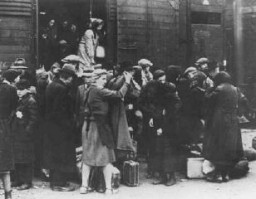
-
The Rosenstraße Demonstration, 1943
ArticleIn February/March 1943, non-Jewish Germans protest the incarceration of their Jewish family members at Rosenstrasse 2-4 in Berlin. Learn about the impact of the protest.
-
Theresienstadt: Final Weeks, Liberation, and Postwar Trials
ArticleThe Theresienstadt camp-ghetto existed from 1941 to 1945. Learn about its final weeks, liberation, and the postwar trials of SS commandants and other staff.
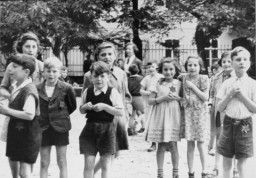
-
Nuremberg Trials
ArticleTrials of top surviving German leaders for Nazi Germany’s crimes began in Nuremberg after World War II. Read about the Nuremberg trials.
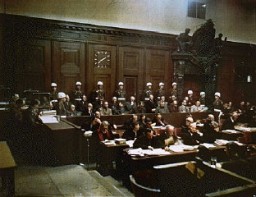
-
D-Day: Historical Film Footage
Media EssayOn June 6, 1944, Allied troops landed on the beaches of Normandy, France. Commonly known as D-Day, the invasion was one of the most important Allied military operations during World War II.
-
Scene during fighting in the Hürtgen Forest
PhotoAn American anti-aircraft gun, towed by a truck camouflaged with foliage, moves into position in the Hürtgen Forest to provide fire support against ground targets. November 6, 1944. US Army Signal Corps photograph taken by C A Corrado.
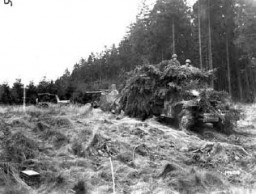
-
Page from The Poisonous Mushroom
PhotoPage from Der Giftpilz (The Poisonous Mushroom). This photograph shows a page from one of several antisemitic children's books published by Julius Streicher's Der Stürmer-Verlag, used for indoctrinating youth. The text reads, "The Jewish nose is crooked at its tip. It looks like the number 6."
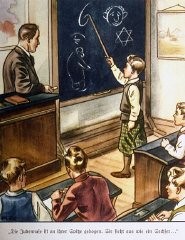
-
Coffins containing bodies of Jews killed in the Kielce pogrom
PhotoCoffins containing bodies of Jews killed in the Kielce pogrom. Poland, July 6, 1946. The mass violence of the Kielce pogrom drew on an entrenched local history of antisemitism–especially false allegations accusing Jews of using the blood of Christian children for ritual purposes (a charge known as a “blood libel”)–with the intent of discouraging the return of Jewish Holocaust survivors to Poland.
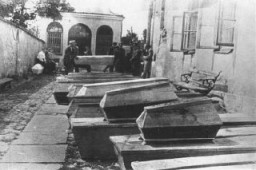
-
Illustration from an antisemitic German children's book
PhotoIllustration from an antisemitic German children's book, Der Giftpilz (The Poisonous Mushroom), used to indoctrinate children in the Nazi worldview. It was published in Nuremberg, Germany, in 1935. The caption to the image on the page shown here reads: "The Jewish nose is crooked, it looks like a 6."

-
Opening statement of the prosecution at the Ministries Trial
PhotoUS Brigadier General Telford Taylor, chief counsel for war crimes, opens The Ministries Trial by reading the prosecution's opening statement. He charges Hitler's ministers with "crimes against humanity." Nuremberg, Germany, January 6, 1948.

-
The Normandy beach as it appeared after D-Day
PhotoThe Normandy beach as it appeared after D-Day. Landing craft on the beach unload troops and supplies transferred from transports offshore. Barrage balloons hover overhead to deter German aircraft. Normandy, France, undated (after June 6, 1944).
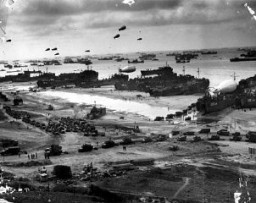
-
British troops land on the beaches of Normandy on D-Day
PhotoBritish troops land on the beaches of Normandy on D-Day, the beginning of the Allied invasion of France to establish a second front against German forces in Europe. Normandy, France, June 6, 1944.
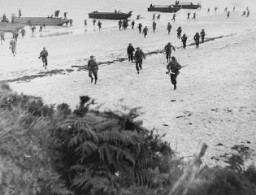
-
US troops wade ashore at Normandy on D-Day
PhotoUS troops wade ashore at Normandy on D-Day, the beginning of the Allied invasion of France to establish a second front against German forces in Europe. Normandy, France, June 6, 1944.

-
Anonymous Girl Diarist from the Lodz Ghetto
ArticleDiaries bear witness to some of the most heartbreaking experiences of the Holocaust. Read excerpts from the diary of an anonymous child in the Lodz ghetto.
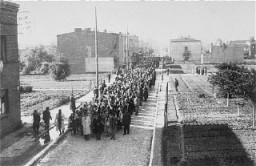
-
Jewish Brigade Group
ArticleThe Jewish Brigade Group of the British army was formally established in September 1944. It included more than 5,000 Jewish volunteers from Mandatory Palestine.

-
Fire Oaths
Article“Fire Oaths” were statements that declared why the works of certain authors were thrown into the flames during the 1933 burning of books under the Nazi regime.

-
Documenting Liberation: J Malan Heslop
ArticleLearn about J Malan Heslop, one of the first Allied photographers in the Army Signal Corps to document evidence of Nazi crimes.
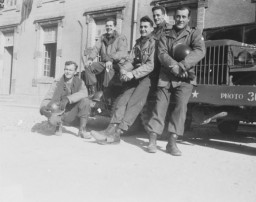
-
Documenting Liberation: Arnold E. Samuelson
ArticleArmy Signal Corps photographer Arnold E. Samuelson documented Allied military campaigns, Nazi crimes, and the plight of concentration camp prisoners.

-
Babenhausen Displaced Persons Camp
ArticleAfter WWII, many Holocaust survivors, unable to return to their homes, lived in displaced persons camps in Germany, Austria, and Italy. Read about Babenhausen DP camp.

